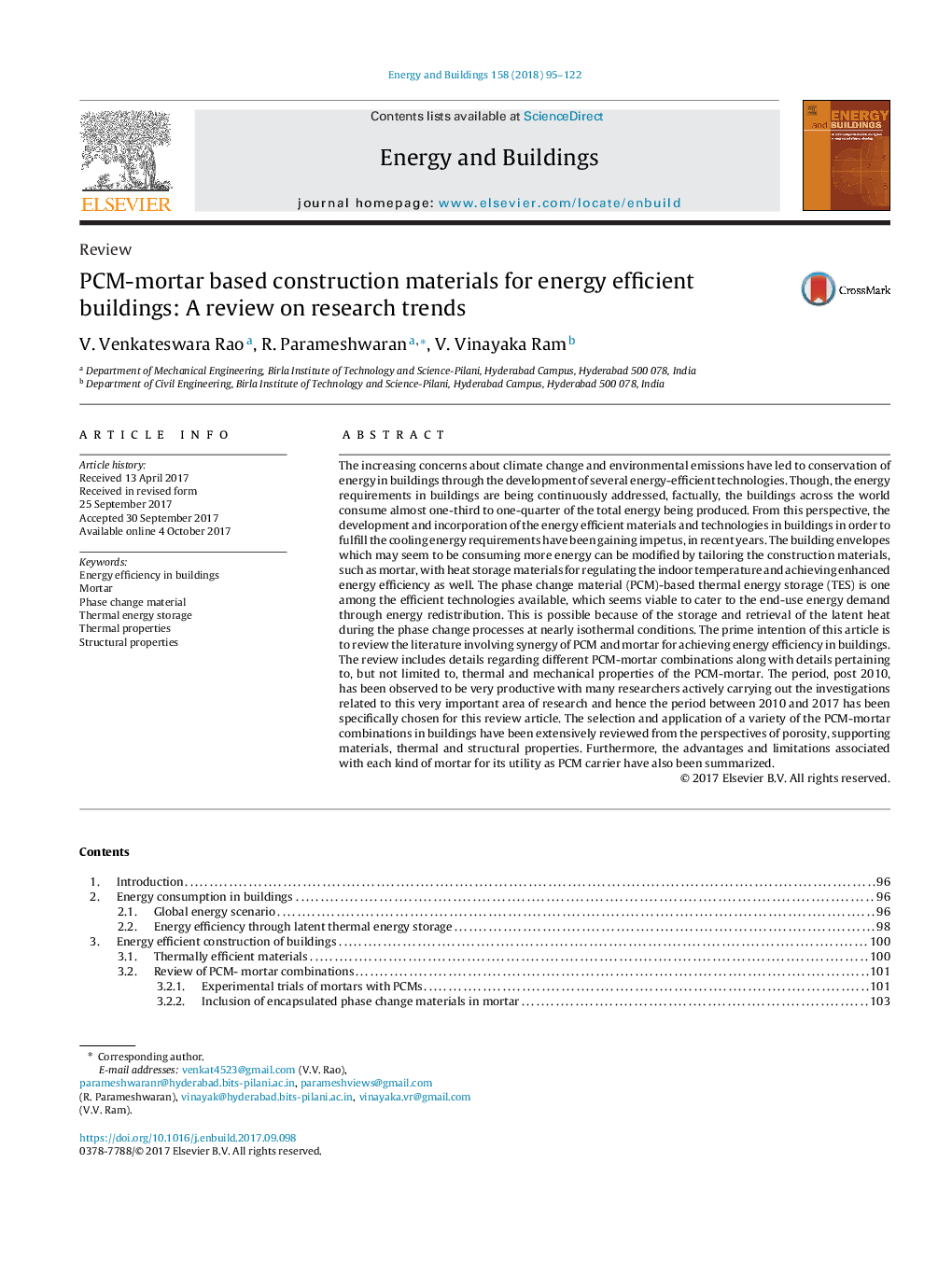| Article ID | Journal | Published Year | Pages | File Type |
|---|---|---|---|---|
| 4914094 | Energy and Buildings | 2018 | 28 Pages |
â¢Thermal storage and mechanical properties of PCM-mortar combinations are reviewed.â¢Signified the selection of PCM-mortar based on physical and chemical compatibility.â¢Reviewed meritsand limitations of each kind of mortar for its use as PCM carrier.â¢Statistical overview of different kinds of PCM-mortar combinations is presented.
The increasing concerns about climate change and environmental emissions have led to conservation of energy in buildings through the development of several energy-efficient technologies. Though, the energy requirements in buildings are being continuously addressed, factually, the buildings across the world consume almost one-third to one-quarter of the total energy being produced. From this perspective, the development and incorporation of the energy efficient materials and technologies in buildings in order to fulfill the cooling energy requirements have been gaining impetus, in recent years. The building envelopes which may seem to be consuming more energy can be modified by tailoring the construction materials, such as mortar, with heat storage materials for regulating the indoor temperature and achieving enhanced energy efficiency as well. The phase change material (PCM)-based thermal energy storage (TES) is one among the efficient technologies available, which seems viable to cater to the end-use energy demand through energy redistribution. This is possible because of the storage and retrieval of the latent heat during the phase change processes at nearly isothermal conditions. The prime intention of this article is to review the literature involving synergy of PCM and mortar for achieving energy efficiency in buildings. The review includes details regarding different PCM-mortar combinations along with details pertaining to, but not limited to, thermal and mechanical properties of the PCM-mortar. The period, post 2010, has been observed to be very productive with many researchers actively carrying out the investigations related to this very important area of research and hence the period between 2010 and 2017 has been specifically chosen for this review article. The selection and application of a variety of the PCM-mortar combinations in buildings have been extensively reviewed from the perspectives of porosity, supporting materials, thermal and structural properties. Furthermore, the advantages and limitations associated with each kind of mortar for its utility as PCM carrier have also been summarized.
